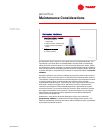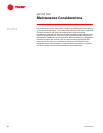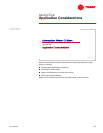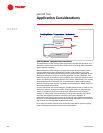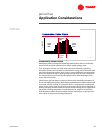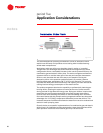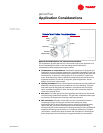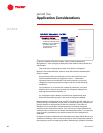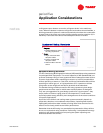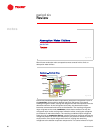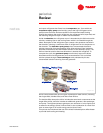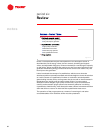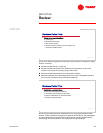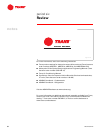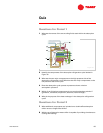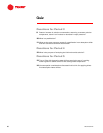
TRG-TRC011-EN 59
period five
Application Considerations
notes
a refrigerant vapor detector to monitor refrigerant levels in the machinery
room. When the detector measures refrigerant levels above those allowable, a
building automation system is used to automatically shut down the combustion
process. Due to the lower cost, many building owners employ exception (b) in
machinery rooms that have direct-fired absorption chillers or boilers.
Equipment Rating Standards
The Air Conditioning & Refrigeration Institute (ARI) establishes rating standards
for packaged HVAC equipment. The overall objective of ARI Standard 560 is to
promote consistent rating of many types and sizes of absorption water chillers.
It covers single-effect chillers operating on steam or a hot fluid, double-effect
chillers operating on steam or a hot fluid, and direct-fired double-effect chillers
operating on natural gas, oil, or liquid petroleum (LP). It pertains to chillers
using water as the refrigerant and lithium bromide as the absorbent.
The standard rating conditions used for ARI rating represent typical design
temperatures and flow rates for which water-cooled systems are designed.
They are not suggestions for good design practice for a given system—they
simply define a common rating point to aid comparisons. Trends toward
improved system energy efficiency have changed some of the actual conditions
for specific applications.
Impurities in the chilled- and cooling-water systems eventually deposit on
evaporator, absorber, and condenser tube surfaces, impeding heat transfer.
Catalogued performance data includes a fouling factor that accounts for this
effect to more closely predict actual chiller performance.
Remember that the ARI rating is a standardized representation. Many chillers
do not run at standard rating conditions. Performing a comprehensive energy
analysis is still the best method of comparing the system operating cost
difference between two chillers.
▲
◆ Establish definitions, testing,
and rating requirements
▲
◆ Single- and double-effect
absorption chillers
◆ Indirect- and direct-fired
absorption chillers
◆ Water-and-lithium bromide
solution
Figure 67



